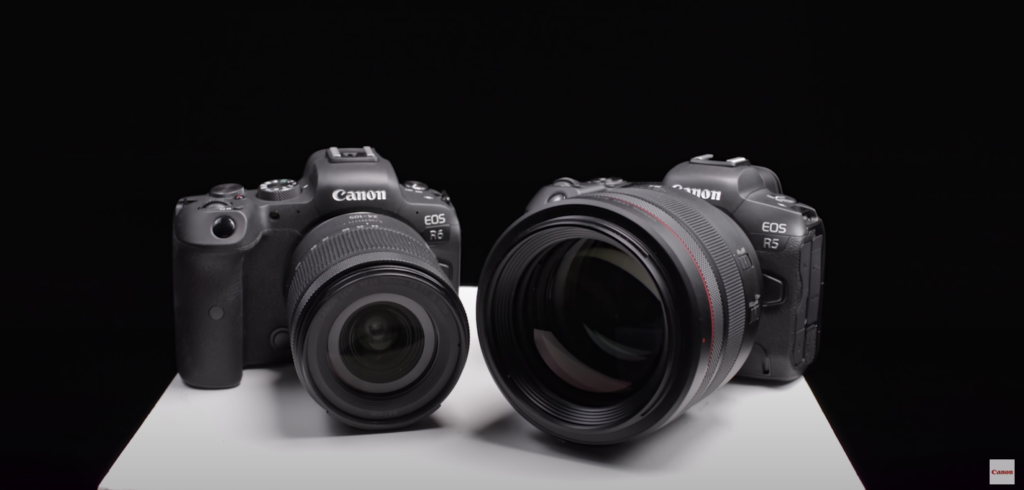2020 was the year when everything went online. Out of necessity, came innovation. Those that had been striving for greater digital delivery finally found that the market met them where they were.
At Future Fusion, long-term client Canon Europe came to us for help facilitating product launches which would usually have taken place at major European events Photokina and IBC. Instead, they were to be via lively and engaging livestream videos. For brands looking to continue operations during a global pandemic, unique content solutions have been imperative.
So how can you harness the latest technology and the current appetite for digital to create meaningful launches in 2020 and beyond?
Here are six things to consider when pivoting to a livestream launch.
1. Offer expertise and an authoritative voice
With the potential reach of an online platform, it can be tempting to try to appeal to a broader audience than more niche in-person events would garner. However, a livestream represents a time investment from a viewer – more so than a quick scroll of a product page. Those who will stay with you are those who come to the brand for a reason. Ensure you reward them by catering to their needs and providing real value.
For the Reimagine livestream product launch on YouTube, Canon launched two flagship mirrorless cameras, the Canon EOS R5 and R6, as well as four lenses, two lens extenders and a professional photo printer.
Delving into lengthy product briefing documents, we ensured the video scripts contained the deep technical insights demanded by a knowledgeable photographic audience. Combing forums for rumours ahead of launch also ensured questions asked during the livestream were the very ones on customers’ lips.
Canon product specialists delivered the core technical information, providing an authoritative voice on the subjects and offering unrivalled expertise. This made the livestream an attractive prospect – over 19,000 people tuned in to watch live and the video has had close to 120,000 views on YouTube to date.

2. Choose dynamic and engaging presenters
A live stream needs to be compelling, with both a strong hook to draw viewers’ attention and sustained high-quality content to keep them watching. While Canon rightfully wanted its own technical experts to deliver the core information during Reimagine, we felt that a chat show-style format with a professional presenter would make for a more engaging viewing experience.
The right presenter can carry your livestream, providing a consistent voice throughout the different sections of the video and linking interviews and field footage together seamlessly. For Reimagine, this was Lucy Hedges – Technology Editor for Metro newspaper and a presenter specialising in consumer technology, with over 10 years’ experience in print, online and broadcast media and live events.
Her personable presenting style was pivotal, putting the product experts at ease and keeping the pace and enthusiasm up throughout the hour-long stream. Interjecting with spontaneous questions and reactions showed her genuine excitement about the kit and her own technical knowledge. She was the natural choice for our second Canon live stream, Canon Vision, to launch the Canon EOS C70 cinema camera.
3. Mix formats to maintain momentum
What works face to face does not translate to online. We’re all increasingly familiar with Zoom doom and digital fatigue as we continue to work remotely and interact primarily through screens. A lengthy speech with a simple slide show might have engaged an audience at IBC, but it’s unlikely to cut the mustard with an online audience.
Being aware of attention spans is crucial to the planning of your livestream broadcast. Diversity and variation will keep a viewer engaged – be that in format, from shifting from case studies of a product being used in the field to a studio discussion, or by changing the voice and delivery by bringing in new speakers.
For the two Canon livestreams, this meant a mix of pieces to camera, Q&As and dynamic segments of inspirational videos made by photographers and filmmakers shooting with the products being launched. Mixing insight with inspiration proved a recipe for success.
4. Fill in the virtual gaps
In-person product launches offer experiences that digital can’t replicate. Seeing, holding and testing something in real life is clearly worlds apart from watching a video. Having these considerations front and centre in your livestream planning, asking what a customer would have done in a physical space and seeking to replicate the experience on-camera, will bring audiences as close to the product as possible.
For the camera launches, this included ensuring that they were visible in people’s hands and next to other cameras in the line-up, to give a sense of scale and handling, rather than just sitting on a table. Showing close-ups of in-demand features, such as where the main controls and assignable buttons had been placed, brought the user experience and creative possibilities home to viewers.
5. Make it interactive
Engagement elevates a livestream, so where possible, and appropriate, building in interactivity will allow people at home to feel like active participants, rather than passive viewers.
An obvious starting point for this is YouTube Live Streaming, where the live chat function allows you to engage directly with viewers in real time. Responding to questions and comments in the chat creates a more engaging experience for the audience, while offering brands valuable feedback and a chance to be more personable. There’s an added advantage to using popular platforms which users are already familiar with.
Live Q&A sessions can also be factored into a product launch package. Unlike a pre-recorded live stream, you’ll have less control of the output, but the content will be more authentic. Again, it’s a valuable way to build an image of a genuine and approachable brand.
6. Discuss appropriate KPIs
There’s no point creating strong content without understanding how it has performed and delivered for your client’s needs. When deciding on livestream platforms, look to the end from the start, building in appropriate monitoring from the outset and agreeing on KPIs.
As with a web page, are you more concerned with the total amount of viewers, or with dwell times which shows how many viewers stuck with you until the end? As well as logging the total viewers, would it be appropriate to assess the numbers at a critical moment during the presentation, such as the moment of the product launch itself? Or will it come down to sales?
Whatever the measurement, livestreams have enormous potential when it comes to inspiring viewers, demonstrating value and informing buying decisions. As we get used to staying together while apart, their value to businesses only look set to rise.
By Lucy Fulford
I work for Future Fusion, the content marketing agency owned by Future PLC. We are experts at building communities around people’s passions and in doing so positioning brands at the heart of incredible content that drives transformative results.
We publish a monthly newsletter with the latest trends in content marketing. You can sign up here if you’d like to be kept informed – Future Fusion Monthly Email.






